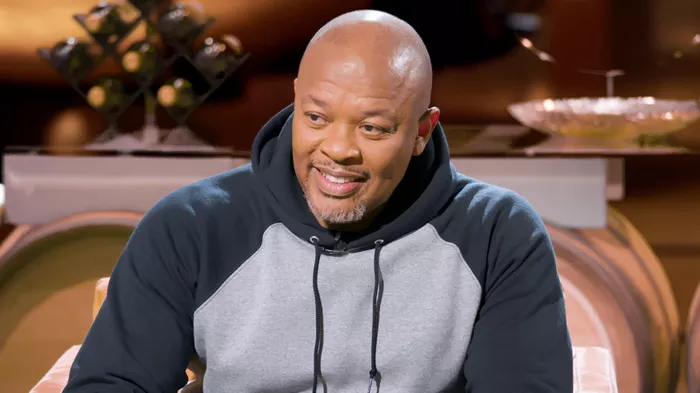Funk rap is a dynamic fusion genre that seamlessly blends the rhythmic grooves of funk music with the lyrical flow and beats of rap. This unique style emerged in the late 1980s and early 1990s, influenced by the rich heritage of funk music and the growing popularity of rap. In this article, we delve deep into the essence of funk rap, exploring its origins, key characteristics, notable artists, and its impact on the music scene.
Origins and Evolution
To understand funk rap, we must first explore the roots of its two parent genres: funk and rap. Funk music originated in the 1960s, primarily driven by African American musicians such as James Brown, Sly and the Family Stone, and Parliament-Funkadelic. Its signature elements include syncopated rhythms, heavy basslines, brass instrumentation, and a strong emphasis on groove and rhythm.
On the other hand, rap, also known as hip-hop, emerged in the 1970s in the Bronx, New York City. It began as a form of expression for urban youth, using spoken word poetry over rhythmic beats. Early pioneers of rap include Grandmaster Flash and the Furious Five, Run-D.M.C., and LL Cool J.
The fusion of funk and rap was a natural progression, as both genres shared a focus on rhythm, storytelling, and social commentary. Artists began experimenting with incorporating funk elements into their rap tracks, leading to the birth of funk rap.
Key Characteristics of Funk Rap
Funk rap is characterized by several key elements that distinguish it from other hip-hop subgenres:
Funky Grooves: Central to funk rap is its use of funky grooves and basslines, often sampled from classic funk records. These grooves create a lively and danceable vibe that is synonymous with funk music.
Lyrical Flow: Like traditional rap, funk rap maintains a strong emphasis on lyrical delivery and storytelling. Artists often use witty wordplay, clever metaphors, and social commentary in their verses.
Live Instrumentation: While funk rap heavily relies on samples, many artists incorporate live instrumentation, especially guitars, horns, and keyboards, to enhance the funk feel and add a dynamic layer to their music.
Funk-inspired Production: Production in funk rap is characterized by its use of funky drum patterns, layered instrumentation, and a mix of electronic and organic sounds. Producers often manipulate samples to create unique textures and vibes.
Party Atmosphere: A common theme in funk rap is its celebration of life, music, and community. Many funk rap songs have an upbeat and celebratory tone, encouraging listeners to dance and have a good time.
Influence on Fashion and Culture: Beyond music, funk rap has had a significant impact on fashion and culture, influencing styles such as urban streetwear, funky hairstyles, and a vibrant aesthetic that reflects the genre’s energy and spirit.
Notable Artists and Albums
Numerous artists have made significant contributions to the funk rap genre, shaping its sound and influencing future generations of musicians. Some notable artists and albums include:
The Roots – “Illadelph Halflife”: Known for their live instrumentation and thought-provoking lyrics, The Roots blend funk, jazz, and rap seamlessly in this iconic album.
OutKast – “Aquemini”: OutKast’s innovative approach to funk rap, blending Southern funk influences with their unique storytelling, made “Aquemini” a groundbreaking album in the genre.
A Tribe Called Quest – “The Low End Theory”: While primarily known for their jazz-infused rap, A Tribe Called Quest’s exploration of funk elements in tracks like “Scenario” showcased their versatility and influence on funk rap.
Parliament-Funkadelic: As pioneers of funk music, Parliament-Funkadelic’s albums such as “Mothership Connection” and “Funkentelechy vs. the Placebo Syndrome” laid the foundation for funk rap with their funky grooves and imaginative storytelling.
Dr. Dre – “The Chronic”: Dr. Dre’s production skills and incorporation of funk samples in tracks like “Nuthin’ but a ‘G’ Thang” played a crucial role in popularizing funk rap on the West Coast.
Impact and Legacy
Funk rap has left a lasting impact on the music landscape, influencing subsequent generations of artists across various genres. Its fusion of funk’s infectious grooves with rap’s lyrical prowess created a dynamic and accessible style that resonated with audiences worldwide.
Furthermore, funk rap’s emphasis on live instrumentation and musicality helped bridge the gap between traditional funk enthusiasts and hip-hop fans, fostering a sense of musical appreciation and collaboration.
In terms of legacy, funk rap continues to inspire artists in the contemporary music scene. Modern acts such as Anderson .Paak, Kendrick Lamar, and Childish Gambino incorporate funk elements into their music, keeping the spirit of funk rap alive while pushing boundaries and exploring new sonic territories.
Conclusion
Funk rap stands as a testament to the creative fusion of musical genres and the power of rhythmic innovation. From its roots in the funk and rap movements to its influence on fashion, culture, and contemporary music, funk rap remains a vibrant and essential part of the musical landscape. As artists continue to draw inspiration from its groovy rhythms and infectious energy, funk rap’s legacy continues to evolve and captivate audiences around the globe.

